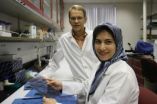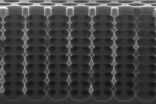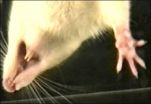(Press-News.org) Researchers from the University of Exeter Medical School have for the first time identified the mechanism that protects us from developing uncontrollable fear.
Our brains have the extraordinary capacity to adapt to changing environments – experts call this 'plasticity'. Plasticity protects us from developing mental disorders as the result of stress and trauma.
Researchers found that stressful events re-programme certain receptors in the emotional centre of the brain (the amygdala), which the receptors then determine how the brain reacts to the next traumatic event.
These receptors (called protease-activated receptor 1 or PAR1) act in the same way as a command centre, telling neurons whether they should stop or accelerate their activity.
Before a traumatic event, PAR1s usually tell amygdala neurons to remain active and produce vivid emotions. However, after trauma they command these neurons to stop activating and stop producing emotions – so protecting us from developing uncontrollable fear.
This helps us to keep our fear under control, and not to develop exaggerated responses to mild or irrelevant fear triggers – for example, someone who may have witnessed a road traffic accident who develops a fear of cars or someone who may have had a dog jump up on them as a child and who now panics when they see another dog.
The research team used mice in which the PAR1 receptors were genetically de-activated and found that the animals developed a pathological fear in response to even mild, aversive stimuli.
The study was led by Professor Robert Pawlak of University of Exeter Medical School. He said: "The discovery that the same receptor can either awaken neurons or 'switch them off' depending on previous trauma and stress experience, adds an entirely new dimension to our knowledge of how the brain operates and emotions are formed."
Professor Pawlak added: "We are now planning to extend our study to investigate if the above mechanisms, or genetic defects of the PAR1 receptor, are responsible for the development of anxiety disorders and depression in human patients. There is more work to be done, but the potential for the development of future therapies based on our findings is both exciting and intriguing."
The article describing the above findings has recently been published in one of the most prestigious psychiatry journals, Molecular Psychiatry.
### END
Breakthrough study identifies trauma switch
Research identifies the mechanism that protects our brains from turning stress and trauma into post-traumatic stress disorder
2012-10-05
ELSE PRESS RELEASES FROM THIS DATE:
Benzodiazepine use and dementia in the over 65s
2012-10-05
The results from comparative analysis of this population demonstrate the risk of developing dementia increased by 50% for subjects who consumed benzodiazepines during the follow-up period, compared with those who had never used benzodiazepines. Although this study does not confirm a cause and effect relationship, as is the case for all epidemiological research, the researchers recommend increased vigilance when using these molecules, which remain useful in the treatment of insomnia and anxiety in elderly patients.
The results of this research are available online on ...
Essential oils as antigerminants for the storage of potatoes
2012-10-05
This press release is available in Spanish.
One of the critical moments in the final quality of the potato occurs during its storage, as there exists the risk of sprouting or rotting due to pathogenic agents such as bacteria and fungi. In order to avoid this, agricultural engineer David Gómez Castillo carried out research for his PhD on the possibility of substituting the current use of chemical products by treating the tuber with essential oils of mint, caraway, coriander, eucalyptus and clove, "which have proved to be great potential inhibitors in the main problems detected".
The ...
A white mouse
2012-10-05
These proteins are required for melanocyte stem cell self-maintenance and, as such, correct pigmentation throughout the mice's life span. Without these two proteins, the mice's fur turns white.
Their research is published in the review 'Cell Report' and paves the way for serious possibilities in terms of stopping the formation of melanomas, tumours that originate from melanocyte cells.
Melanocytes are cells in the organism used for skin, fur and hair pigment. This pigmentation function provides protection from the sun and lends organisms their colour. Malfunctions in ...
Mosquito genetics may offer clues to malaria control, Virginia Tech researchers say
2012-10-05
An African mosquito species with a deadly capacity to transmit malaria has a perplexing evolutionary history, according to discovery by researchers at the Fralin Life Science Institute at Virginia Tech.
Closely related African mosquito species originated the ability to transmit human malaria multiple times during their recent evolution, according to a study published this week in PLoS Pathogens by Igor Sharakhov, an associate professor of entomology in the College of Agriculture and Life Sciences, and Maryam Kamali of Tehran, Iran, a Ph.D. student in the department of ...
Building 3-D structures from a 2-D template
2012-10-05
This press release is available in German.
Deep below the silicon surface, the SPRIE method produces regular structures in the micrometer range that refract light. (Photo: KIT/CFN)
In modern telecommunications, light carries digital information over kilometers within seconds. Adapted optical materials control the light signals. In the AFM journal, researchers from Berlin, Louvain, and from Karlsruhe Institute of Technology present a method to produce photonic crystals. Their optical properties are adjusted by structures of micrometer size. The method is rapid, cheap, ...
Low incidence of needlestick injuries among staff at national pharmacy chain
2012-10-05
CHICAGO (October 5, 2012) – Vaccinations for flu, tetanus and other common vaccines are increasingly taking place in non-medical settings such as supermarkets and drug stores. This added responsibility for pharmacists increases the risk of needlestick injuries (NSIs), puncture wounds often suffered while preparing or after use of a needle. NSIs can transmit bloodborne pathogens, including hepatitis C and HIV, from an infected patient to the person administering the vaccine.
A new report published in the November issue of Infection Control and Hospital Epidemiology, the ...
Genotyping helps identify source of clinic infection outbreak
2012-10-05
CHICAGO (October 5, 2012) – Researchers from East Carolina University used a new technique of genotyping to identify the source of a hematology clinic outbreak of Mycobacterium mucogenicum, a gram-positive, acid-fast bacteria found in tap water. This is the first outbreak of M. mucogenicum in an ambulatory care setting; five other outbreaks have been reported in hospital settings since 1995. The study was published in the November issue of Infection Control and Hospital Epidemiology, the journal of the Society for Healthcare Epidemiology of America.
Using repetitive ...
MIT Research: What number is halfway between 1 and 9? Is it 5 -- or 3?
2012-10-05
CAMBRIDGE, Mass. — Ask adults from the industrialized world what number is halfway between 1 and 9, and most will say 5. But pose the same question to small children, or people living in some traditional societies, and they're likely to answer 3.
Cognitive scientists theorize that that's because it's actually more natural for humans to think logarithmically than linearly: 30 is 1, and 32 is 9, so logarithmically, the number halfway between them is 31, or 3. Neural circuits seem to bear out that theory. For instance, psychological experiments suggest that multiplying the ...
How will smart cars affect the future of driving?
2012-10-05
California, Nevada, and Florida have already made driverless cars street-legal, and continuing advances in the technology have led many to predict that the commercialization of automated vehicles is a real possibility in the not-so-distant future. As driverless vehicles become more commonplace, it is important to understand how humans interact with this new technology. The Human Factors special issue on automation, featuring the latest articles on designing automated vehicles with the driver in mind, is now available online. The October 2012 issue may be found at http://hfs.sagepub.com/content/current. ...
'Disgusted' rats teaching scientists about nausea, work may lead to new cancer treatments
2012-10-05
Nausea is a common and distressing side effect of many drugs and treatments. Unlike vomiting, nausea is not well understood, but new research by University of Guelph scientists may soon change that.
Guelph PhD student Katharine Tuerke, neuroscience researcher Cheryl Limebeer and Prof. Linda Parker in the Department of Psychology believe they've found the mechanism in the brain that is responsible for the sensation of nausea – with the help of some "disgusted" rats.
Their study was published this week in Journal of Neuroscience.
"Although everyone has experienced ...
LAST 30 PRESS RELEASES:
Making lighter work of calculating fluid and heat flow
Normalizing blood sugar can halve heart attack risk
Lowering blood sugar cuts heart attack risk in people with prediabetes
Study links genetic variants to risk of blinding eye disease in premature infants
Non-opioid ‘pain sponge’ therapy halts cartilage degeneration and relieves chronic pain
AI can pick up cultural values by mimicking how kids learn
China’s ecological redlines offer fast track to 30 x 30 global conservation goal
Invisible indoor threats: emerging household contaminants and their growing risks to human health
Adding antibody treatment to chemo boosts outcomes for children with rare cancer
Germline pathogenic variants among women without a history of breast cancer
Tanning beds triple melanoma risk, potentially causing broad DNA damage
Unique bond identified as key to viral infection speed
Indoor tanning makes youthful skin much older on a genetic level
Mouse model sheds new light on the causes and potential solutions to human GI problems linked to muscular dystrophy
The Journal of Nuclear Medicine ahead-of-print tip sheet: December 12, 2025
Smarter tools for peering into the microscopic world
Applications open for funding to conduct research in the Kinsey Institute archives
Global measure underestimates the severity of food insecurity
Child survivors of critical illness are missing out on timely follow up care
Risk-based vs annual breast cancer screening / the WISDOM randomized clinical trial
University of Toronto launches Electric Vehicle Innovation Ontario to accelerate advanced EV technologies and build Canada’s innovation advantage
Early relapse predicts poor outcomes in aggressive blood cancer
American College of Lifestyle Medicine applauds two CMS models aligned with lifestyle medicine practice and reimbursement
Clinical trial finds cannabis use not a barrier to quitting nicotine vaping
Supplemental nutrition assistance program policies and food insecurity
Switching immune cells to “night mode” could limit damage after a heart attack, study suggests
URI-based Global RIghts Project report spotlights continued troubling trends in worldwide inhumane treatment
Neutrophils are less aggressive at night, explaining why nighttime heart attacks cause less damage than daytime events
Menopausal hormone therapy may not pose breast cancer risk for women with BRCA mutations
Mobile health tool may improve quality of life for adolescent and young adult breast cancer survivors
[Press-News.org] Breakthrough study identifies trauma switchResearch identifies the mechanism that protects our brains from turning stress and trauma into post-traumatic stress disorder


